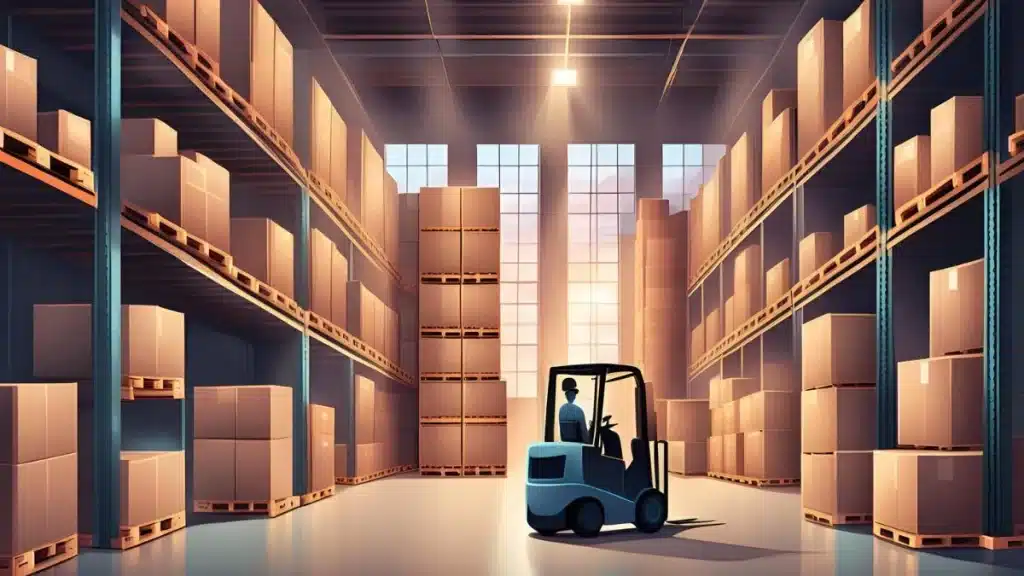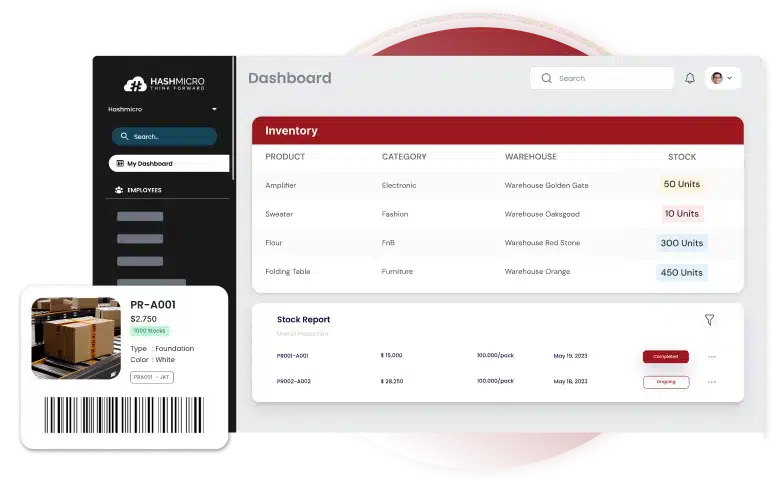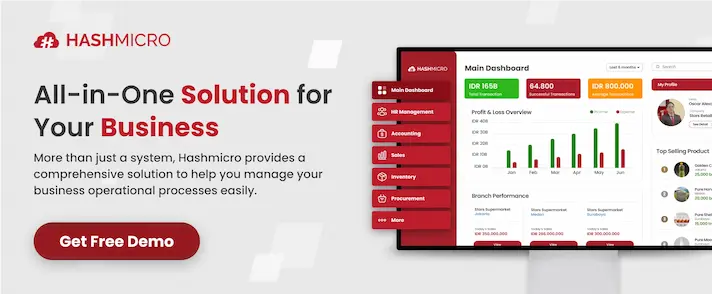Are your warehouse costs eating into your profits? Or are you having difficulties with setting up and maintaining your warehouse? Inefficient warehouse management can lead to skyrocketing expenses and lost revenue. Not to mention that warehouse maintenance makes up a huge part of your overall business expenses. Walao eh!
Efficient warehouse operations aren’t just about cutting costs; they improve profitability by speeding up deliveries and enhancing customer satisfaction. With business demands growing, understanding and managing costs is essential.
Imagine seamlessly managing inventory, reducing waste, and making your warehouse work smarter, not harder. Many businesses are using tools like Warehouse Management Systems (WMS Singapore) to streamline operations and cut costs.
This article will discuss key factors influencing warehouse costs and provide strategies to help you optimize your warehouse operations and improve efficiency.
Key Takeaways
|
What are Warehouse Costs?
Warehousing costs are the expenses for running a warehouse, such as rent, utilities, labor, insurance, and taxes. These also include inventory management costs like order fulfillment and storage. Costs vary monthly based on factors like warehouse size, type of goods stored, and required services.
In Singapore, for example, renting a warehouse typically costs between SGD 2.50 to SGD 5.00 per square foot per month. The price varies based on factors like labor, the size of the space, and the technology used to manage inventory.
Understanding these costs helps businesses run their supply chains smoothly and spot areas where they can save money.
Key Components of Warehousing Costs
When running a warehouse, various costs contribute to overall expenses that businesses need to consider. Below are the key components that make up warehousing costs and how they impact your operations:
- Storage Costs: These are the expenses related to storing goods in a warehouse, including rent or lease payments, utilities (electricity, water, heating), property taxes, and insurance. Rental rates are typically expressed in dollars per square foot per year and can vary depending on location, with lower rates usually found outside major cities.
- Handling Costs: Handling costs cover the expenses involved in moving and processing goods within the warehouse. This includes labor costs for warehouse staff, forklift operators, and the cost of material handling equipment.
- Inventory Management Costs: These are the expenses associated with tracking and managing inventory levels, such as the cost of inventory management software, barcode scanners, and RFID tags.
- Order Fulfillment Costs: Order fulfillment costs refer to the expenses involved in picking, packing, and shipping orders to customers. This includes labor for pickers and packers, packaging materials, and shipping fees.
- Operating Expenses: Operating expenses include costs not directly related to storing inventory, such as property taxes, insurance, maintenance costs (cleaning, repairs), and utilities like electricity and water.
Factors Influencing Warehouse Costs

Warehouse costs are influenced by several key factors that businesses should understand. These factors determine how much you spend on operations each month. Below are the primary factors that influence warehouse costs and how they can vary:
- Warehouse Size and Location: The size and location of the warehouse heavily influence storage costs. Larger warehouses typically require higher rent or lease payments, while prime locations may drive up real estate costs. Rent is usually calculated based on square footage, and some providers may charge based on the number of items stored.
- Inventory Volume and Turnover: Higher inventory volumes increase labor and equipment expenses, impacting handling costs. However, faster inventory turnover can reduce storage expenses, making inventory management more efficient.
- Inventory Type and Storage Requirements: Specialized inventory types often require specific storage conditions, such as temperature control or custom shelving. This can raise both storage and handling costs due to the need for specialized equipment or environmental controls.
- Order Processing and Shipping Methods: The complexity of order processing and the choice of shipping methods affect fulfillment costs. More sophisticated order systems or expedited shipping options typically increase fulfillment expenses, including packaging materials and shipping fees.
- Upkeep and Maintenance: Warehousing costs also include upkeep, especially for owned warehouses. Regular maintenance, repairs, cleaning, and any improvements to the facility fall under this category.
- Utilities: Basic utilities like electricity, water, heating, internet, and waste disposal are essential for warehouse operations. These costs fluctuate based on usage and seasonal demands, such as higher heating bills in colder months or increased electricity costs during peak seasons.
- Labor Costs: A significant part of warehouse costs comes from labor, covering wages for staff involved in picking, packing, material handling, and management. These expenses may vary depending on seasonal demand, especially when hiring temporary staff for peak periods.
- Equipment Costs: This includes purchasing, renting, and maintaining warehouse equipment such as forklifts, conveyor belts, and automated systems. The cost of keeping equipment operational adds to total warehouse expenses.
- Technology Costs: Warehouses increasingly rely on technology like warehouse management system Singapore (WMS) and inventory management software. The cost of implementing and maintaining these systems also contributes to overall warehouse costs.
- Insurance and Taxes: Insurance is required to protect against theft, damage, or injury within the warehouse. Costs will vary based on the types of goods stored and their value. Additional costs like property taxes may also apply, depending on the location of the warehouse.
Categories of Warehousing Costs
Warehousing costs can be categorized into several key areas that impact overall expenses. Each category covers different aspects of operating a warehouse and maintaining efficiency. Let’s break down the main categories of warehousing costs below:
- Construction and Upkeep Costs: These cover the initial expenses for building the warehouse, including material and labor costs. Ongoing upkeep, such as regular maintenance, repairs, and facility improvements, also fall under this category. These costs ensure the warehouse remains functional and in good condition over time.
- Equipment Costs: These include purchasing and maintaining essential warehouse equipment like forklifts, pallet jacks, and conveyor belts. Proper equipment is necessary for smooth warehouse operations and can vary depending on the size and complexity of the facility. Regular maintenance ensures that equipment functions efficiently and reduces downtime.
- Storage and Inventory Costs: Storage costs involve the expense of the warehouse space needed to store inventory, calculated by square footage or item volume. Additionally, the cost of holding inventory itself, including insurance and potential depreciation, adds to the total.
- Labor Wages: Labor costs include the wages of warehouse personnel responsible for day-to-day operations like picking, packing, and managing inventory. Seasonal demand can influence labor needs and fluctuating wages.
- Technology Costs: This includes the cost of implementing technology like warehouse management software (WMS) and inventory tracking software. Technology investments can lead to long-term savings by optimizing warehouse processes.
- Shipping and Transportation Costs: Shipping costs cover the movement of goods in and out of the warehouse, including packaging, handling, and transportation. These expenses, such as fuel and vehicle maintenance, fluctuate with fuel prices and logistical demands, especially for businesses managing their transportation.
How to Calculate Warehouse Costs
How you calculate warehouse pricing depends on factors like the pricing model and whether you buy or rent. Typically, the main considerations are the rate to use the space and estimated operating costs. In most cases, these are calculated monthly or annually based on usage.
1. Common Warehouse Pricing Calculations/Rates
The most widely used pricing model for warehouse rentals in Singapore is the fixed variable pricing model, where businesses pay a fixed rate based on square footage. This is typically calculated using the following formula:
(Total rental space x Rental cost per square foot) + Operating costs = Monthly warehouse cost
For instance, renting a 10,000-square-foot space at SGD 2.50 per square foot, with SGD 30,000 in operating expenses, results in a total monthly cost of SGD 55,000. In areas like Tuas, Jurong West, or Woodlands, the rental rates range between SGD 1.50 and SGD 2.50 per square foot, depending on proximity to transport hubs.
2. Transaction/Unit Rates Model
In Singapore’s on-demand warehousing, rates are often calculated based on the number of transactions or units stored. For instance, if you’re charged SGD 8 per pallet for storing 1,000 pallets, the monthly cost would be SGD 8,000. This model is often favored for its flexibility, especially for businesses with variable storage needs.
3. Buying vs. Renting
Purchasing a warehouse in Singapore requires a substantial upfront investment, often ranging from SGD 1.5 million to SGD 2 million for a 5,000-square-foot space.
However, renting is a more cost-effective option, with rental rates averaging between SGD 1.50 and SGD 3.00 per square foot per month depending on the location and type of warehouse.
4. NNN/CAM Charges
These additional expenses include utilities, maintenance, and other operational costs not covered by the base rent. For example, in Singapore, these charges might cover utilities like electricity and water, and property maintenance. When utilities are included in the rental agreement, they are usually part of the NNN/CAM charges.
How to Reduce Warehousing Costs

How much you spend on your warehouse will directly affect your overall inventory costs, which in turn impacts your profitability. Therefore, optimizing storage costs is crucial for reducing inventory holding costs. By doing so, you can ultimately improve your bottom line and drive higher profits.
- Start by Negotiating Smarter Lease Terms: First and foremost, ensure you’re getting the best lease agreement possible. Negotiating flexible terms, competitive rates and clear responsibilities for maintenance can save you significant money upfront.
- Next, Optimize Your Space: Once you’ve secured the space, make sure you’re using it efficiently. By redesigning your warehouse layout, utilizing vertical storage, and organizing inventory for easy access, you can store more without expanding.
- Implement Technology to Streamline Operations: After optimizing the physical space, it’s time to focus on tech. Utilizing a warehouse management system in Singapore along with barcode tracking software and automation tools helps track stock levels more accurately, reduces overstocking, and simplifies order picking.
- Ensure Smooth Inventory Flow: Furthermore, organizing your warehouse based on inventory flow can make a big difference. For example, placing fast-moving items near the shipping docks ensures they move quickly through the supply chain. By doing so, you reduce unnecessary delays and keep holding costs in check.
- Avoid Overstocking with Better Forecasting: In addition, carrying excess inventory can eat up valuable space and tie up your capital. With improved demand forecasting, you can order only what you need, reducing the risk of overstocking.
- Finally, Consider Outsourcing Fulfillment: If managing the warehouse becomes too complex or expensive, outsourcing to a third-party logistics provider (3PL) might be the answer. Outsourcing allows you to offload storage, fulfillment, and shipping tasks to specialists, cutting your overhead costs.
Should Companies Buy or Rent a Warehouse?
When deciding whether to rent or buy warehouse space in Singapore, several key questions can help guide your decision: What’s your budget? How long will you need the space? Will your employees be working in the warehouse?
For large businesses with significant inventory and staff, purchasing a warehouse can lead to long-term savings. However, for start-ups or businesses with seasonal stock, renting offers flexibility and lower upfront costs.
Renting is also ideal for companies in Singapore with fluctuating inventory levels, like those needing extra space during peak periods such as major shopping events or holiday sales.
Ultimately, the decision depends on your unique circumstances. Assessing your long-term business goals and current operational needs will help determine if it makes more sense to invest in property or to rent warehouse space.
Effectively Reduce Your Warehousing Costs with HashMicro WMS

If you’re looking to cut down on warehousing costs and boost efficiency, HashMicro’s Warehouse Management System (WMS) is the way to go. This top-rated solution in Singapore simplifies warehouse operations through advanced features like RFID, barcode scanning, and real-time tracking.
You don’t have to worry about inventory, picking, and shipping processes anymore. Moreover, it’s scalable to the needs of businesses as they grow, ensuring even the most complex supply chains run smoothly.
HashMicro offers these features to maximize your warehouse space and keep your warehousing costs optimal:
- Stock Forecasting: Helps you predict demand so you won’t overstock or understock, saving money on excess inventory.
- Run Rate Reordering: Automates reordering, ensuring you order only when needed, cutting down on holding costs.
- Stock Optimizer: Maximizes your warehouse space, no need to rent extra, can save a lot of lah.
- Fast/Slow-Moving Stock Analysis: Identifies which items sell fast or slow, so you focus on profitable goods and reduce storage for slow-movers.
- Racking Capacity with Putaway Strategy: Suggests optimal item placement for efficient storage and warehouse flow.
Best of all, it’s super user-friendly and works on both mobile and desktop, so you can use it anywhere, anytime. For businesses across Singapore looking to level up their warehouse efficiency, HashMicro’s WMS is the top choice lah!
Conclusion
Deciding whether to rent or buy warehouse space depends on your business needs. Renting offers flexibility and lower upfront costs for growing or seasonal businesses. However, buying may save money long-term for larger companies with stable inventory demands.
Whether buying or renting, all the companies want is to save costs, so choosing the most suitable strategies, including calculating warehousing costs, will help in the long run. To maximize the use of the warehouse, ensure that the warehouse space, as well as stock flow, are managed well.
HashMicro’s WMS offers a complete solution to optimize your warehouse operations. Its advanced features help reduce costs and improve efficiency in every aspect. For businesses in Singapore, this system is a smart and scalable choice for long-term success.
Transform your warehouse operations and boost efficiency—jio HashMicro for a free demo now!

FAQ About Warehousing Costs
-
How are receiving costs calculated in warehousing?
Receiving costs vary based on how items are processed when they arrive at the warehouse. Fulfillment centers may charge per unit, pallet, or hour for unloading, sorting, and storing goods. Some centers streamline this by bundling receiving costs with other services to make pricing simpler.
-
What are the key factors affecting the storage costs in a warehouse?
Storage costs depend on factors like the type of goods stored (e.g., sensitive items requiring climate control), the amount of space used (cubic foot or pallet), and the storage duration. Companies should choose a storage method that suits their inventory to avoid paying for unused space.
-
What are the typical fees associated with pick-and-pack services?
Pick and pack services, also known as fulfillment charges, are calculated based on the complexity of the inventory and orders. Warehouses charge per item or SKU for picking, packing, and shipping orders to customers.
-
What is the difference between traditional warehousing and fulfillment centers?
Traditional warehousing focuses on storage, while fulfillment centers combine storage with order processing and shipping services. Fulfillment centers are often used in eCommerce because they provide flexible storage and fulfillment options that align with fluctuating order volumes.












